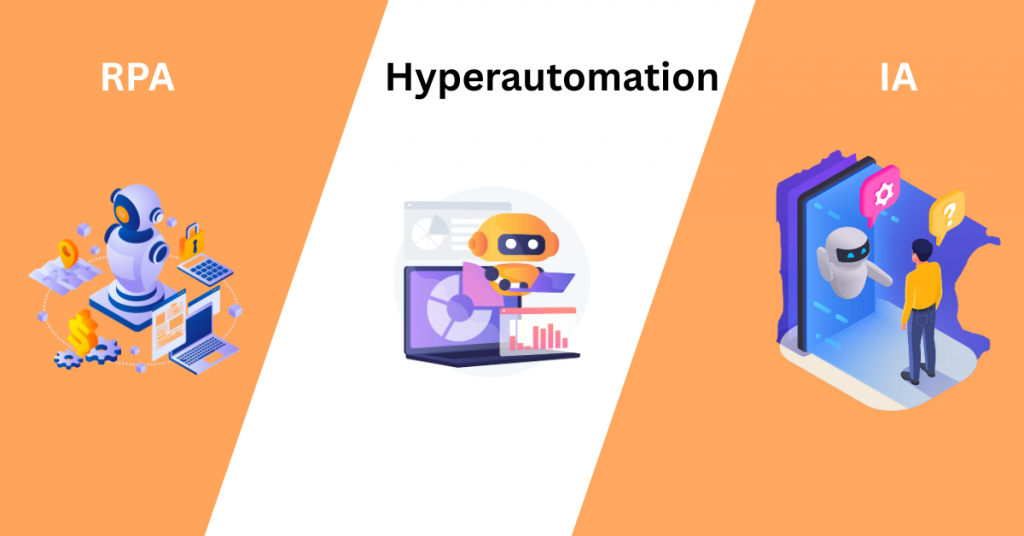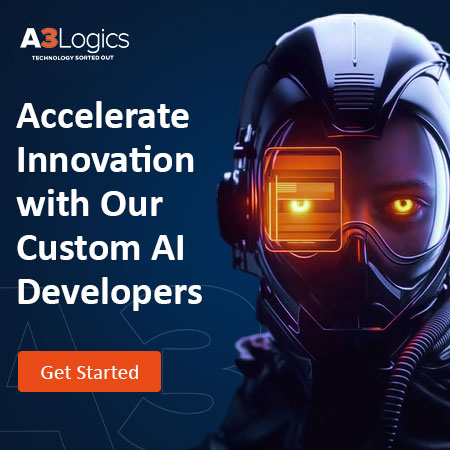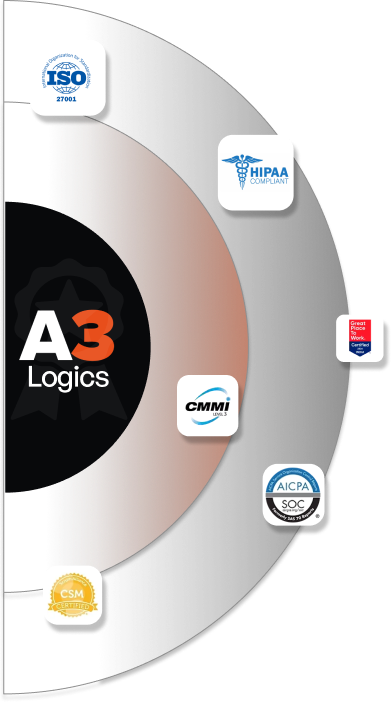Blog Summary:
Here we are going to talk about all the aspects related to differences between RPA vs. Hyperautomation vs. Intelligent Automation in detail. So, if you are thinking about enhancing your operations and unable to decide which technology to consider, then this guide can help you get complete clarity on how automation technologies can help your business succeed and get ahead in the competition.
Table of Contents
Introduction
It is important for businesses around the world to work on a different approach to enhance their operations. This is where automation comes into play as not only quickens up with the entire process but also reduces any kind of errors that can cause issues in the later stages of delivery. This is why we are here to help you understand the most prominent technologies that can help you deal with the same in the name of RPA vs. Hyperautomation vs. Intelligent Automation.

If you do not have the required clarity of which way to go, then you have certainly landed on the right page. We are here to help you understand all the aspects about these technologies in detail to make informed decisions and get ahead in the competition. Read on.
Robotic Process Automation (RPA)
What is RPA? What does RPA do?
One of the key technologies in corporate automation is robotic process automation, or RPA. For repetitive jobs like data entry, invoice processing, and system integration, it uses software bots to simulate human behavior. RPA doesn’t require sophisticated decision-making skills to work with organized data and specified criteria.
Key features of RPA include:
- Automating mundane tasks.
- Interacting with multiple systems via APIs or user interfaces.
- Performing consistent operations without fatigue.
Rule-based tasks involving structured data are best suited for RPA. For instance, moving data across spreadsheets or automating payroll procedures. RPA is the foundation for more sophisticated automation techniques like Hyperautomation and Intelligent Automation, despite its limited intelligence.
Benefits of RPA
RPA offers several advantages for businesses:
- Efficiency: Speeds up processes by eliminating manual intervention.
- Accuracy: Reduces errors by adhering strictly to programmed rules.
- Cost Savings: Minimizes labor costs by automating repetitive tasks.
- Scalability: Easily deployable across various departments.
- Compliance: Ensures adherence to regulatory requirements through consistent execution.
By focusing on structured data and rule-based tasks, RPA enables organizations to achieve quick wins in their digital transformation journey.
RPA Integration in Various Technologies
RPA integrates seamlessly with other technologies to enhance its functionality:
- Artificial Intelligence (AI): Enables bots to handle semi-structured data through machine learning algorithms.
- Optical Character Recognition (OCR): Extracts text from scanned documents for automated processing.
- Natural Language Processing (NLP): Allows bots to interpret human language in emails or chat interfaces.
- Enterprise Resource Planning (ERP): Streamlines workflows by connecting disparate systems.
These integrations expand the scope of business automation beyond simple tasks, laying the groundwork for more sophisticated solutions like Hyper-automation and IA.
Hyper-automation
What is Hyper-automation? What does it do?
Hyper automation is a comprehensive approach to business automation that combines RPA with AI, machine learning (ML), and intelligent document processing (IDP). Coined by Gartner, it aims to automate end-to-end workflows across an organization.
Core characteristics of Hyper-automation include:
- Leveraging multiple tools like RPA, AI, and iBPMS (intelligent business process management suites).
- Creating a digital twin of the organization for real-time process optimization.
- Enabling cognitive decision-making through AI-powered analytics.
It extends beyond task-level automation to orchestrate complex processes across departments, making it a critical driver of digital transformation.
Hyper-automation Integration in Various Technologies and the Role of RPA
Hyper automation thrives on integrating diverse technologies:
- AI & ML: Adds predictive analytics and decision-making capabilities.
- iBPMS: Manages complex workflows with minimal human input.
- IoT Devices: Automates physical processes in industries like manufacturing.
- Integration Platforms as a Service (iPaaS): Connects disparate systems for seamless data flow.
RPA plays a pivotal role in Hyper automation by handling repetitive tasks while advanced technologies manage cognitive functions. Together, they create a scalable ecosystem capable of automating even the most intricate processes.
Intelligent Automation (IA)
What is IA? What does IA do?
Intelligent Automation (IA) represents the convergence of RPA with AI technologies like NLP and ML. Unlike traditional RPA, IA can process unstructured data, adapt to changing conditions, and make informed decisions.
Key capabilities of IA include:
- Automating complex workflows that require judgment or reasoning.
- Enhancing customer experiences through intelligent chatbots.
- Improving operational efficiency with self-learning algorithms.
It transforms business automation from rule-based execution to intelligent problem-solving, making it indispensable for modern enterprises.
IA Integration in Various Technologies
IA integrates cutting-edge technologies to deliver smarter automation:
- NLP: Enables chatbots to understand customer queries.
- Big Data Analytics: Provides insights for strategic decision-making.
- Cognitive Computing: Mimics human thought processes for advanced problem-solving.
- Blockchain: Ensures secure data sharing across automated workflows.
These integrations empower organizations to achieve unparalleled levels of efficiency and innovation through business automation.
RPA vs Hyper automation vs Intelligent Automation
| Feature | Robotic Process Automation | Hyper automation | Intelligent Automation |
| Scope of Automation | Task-level | End-to-end | Cognitive & adaptive |
| Complexity of Tasks | Low | High | Moderate |
| Data Types Handled | Structured | Structured & unstructured | Unstructured |
| Underlying Technologies | Rule-based scripts | AI, ML, iBPMS | AI, NLP |
| Level of Intelligence | Minimal | High | Moderate |
| Strategic Focus | Cost reduction | Digital transformation | Customer-centric innovation |
| Implementation Approach | Quick deployment | Requires cross-system orchestration | Requires robust infrastructure |
The Benefits of a Holistic Automation Strategy
A holistic approach combining RPA, Hyper-automation, and IA offers transformative benefits:
1. Enhanced Operational Efficiency through Streamlined Workflows
A holistic automation strategy integrates technologies like Robotic Process Automation (RPA), Hyper-automation, and Intelligent Automation (IA) to optimize workflows across departments. By automating repetitive and complex tasks, businesses can eliminate bottlenecks, reduce human intervention, and achieve higher throughput. This approach enables continuous process improvement, ensuring that operations run smoothly and efficiently. For example, automating supply chain processes with AI-powered tools can reduce delays and improve inventory management. Enhanced efficiency not only accelerates task completion but also frees employees to focus on strategic initiatives, fostering innovation and driving overall productivity.
2. Improved Customer Satisfaction via Intelligent Service Delivery
Automation technologies enhance customer experiences by delivering faster, more accurate responses and personalized services. Intelligent Automation (IA), powered by AI and NLP, enables chatbots to handle inquiries efficiently while providing tailored solutions. Hyper-automation further integrates customer service systems to ensure seamless interaction across channels. For instance, automating customer onboarding with IA reduces wait times and eliminates errors in documentation. By leveraging these technologies, businesses can meet customer expectations for speed and quality while building stronger relationships. Improved satisfaction translates into higher retention rates and a competitive edge in the marketplace.
3. Reduced Costs by Minimizing Manual Intervention Across Processes
A holistic automation strategy significantly reduces operational costs by automating labor-intensive tasks. Robotic Process Automation (RPA) handles repetitive processes like data entry or invoice processing, cutting down on human resource expenses. Hyper automation extends cost savings by optimizing complex workflows across departments, reducing inefficiencies and errors. Additionally, automation tools improve resource allocation, ensuring that budgets are directed toward strategic priorities rather than routine operations. This reduction in manual intervention not only lowers costs but also enhances profitability, making automation a key driver of financial sustainability.
4. Greater Scalability as Businesses Adapt to Market Changes
Automation technologies provide the flexibility needed for businesses to scale operations efficiently. Hyper automation integrates diverse systems to automate end-to-end processes, enabling organizations to expand without overburdening existing resources. Intelligent Automation (IA) adapts to dynamic market conditions by analyzing data trends and optimizing workflows accordingly. For example, automated demand forecasting can help businesses adjust production levels in real-time. This scalability ensures that companies remain agile in responding to new opportunities or challenges while maintaining consistent performance standards across all functions.
5. Accelerated Digital Transformation by Integrating Advanced Technologies
Holistic automation is central to digital transformation efforts, combining RPA, Hyperautomation, and IA with AI-driven tools like machine learning and big data analytics. This integration enables businesses to modernize legacy systems, optimize operations, and gain actionable insights from data. Hyperautomation creates a digital twin of the organization for real-time monitoring and process optimization. By embedding automation into their core strategies, companies can accelerate innovation cycles, improve decision-making capabilities, and stay ahead in the competitive landscape of digital-first enterprises.
By adopting a comprehensive strategy, organizations can unlock the full potential of business automation.
RPA vs. Hyper automation vs. Intelligent Automation: Choosing the Right Technology for Your Business
If you are thinking what are the necessary steps for you to follow to choose the right technology for your business needs, then the below steps can help you understand all the aspects about it. Check it out:
1. The Nature and Complexity of Processes
Choosing the right automation technology depends heavily on the complexity of the processes involved. Simple, repetitive tasks that follow clear rules are best suited for Robotic Process Automation (RPA). For instance, data entry or invoice processing can be efficiently handled by RPA bots. However, complex workflows that span multiple departments and require decision-making or cognitive capabilities demand Hyperautomation or Intelligent Automation (IA). These advanced approaches integrate technologies like AI and machine learning to automate end-to-end processes, enabling businesses to address intricate challenges while driving digital transformation.
2. Types of Data Involved
The type of data being processed is another crucial factor in selecting automation technologies. Structured data—organized in predefined formats like spreadsheets—is ideal for RPA, which excels at rule-based automation. On the other hand, unstructured data—such as emails, images, or social media content—requires Intelligent Automation (IA) or Hyperautomation. These technologies leverage AI-powered tools like natural language processing (NLP) and optical character recognition (OCR) to interpret and process unstructured data effectively. Businesses should assess their data landscape to determine which technology aligns with their needs.
3. Desired Level of Intelligence
The level of intelligence required in automation determines the choice between RPA, Hyperautomation, and IA. RPA is suitable for tasks requiring minimal intelligence, such as repetitive rule-based operations. Hyperautomation and IA offer higher levels of intelligence by integrating AI and machine learning for decision-making and predictive analytics. These technologies enable businesses to automate processes that require reasoning, adaptability, and learning from historical data. Organizations aiming for cognitive capabilities should prioritize IA or Hyperautomation for their automation strategy.
4. Existing Infrastructure
When adopting automation technology, compatibility with current infrastructure is a major factor. For companies with little IT resources, RPA is perfect since it can be readily implemented inside legacy systems without major modifications. Often, hyperautomation and IA need strong IT infrastructure to support sophisticated technologies including integration services and artificial intelligence systems. When using these technologies, companies have to assess their existing systems to guarantee smooth integration and scalability. Avoiding disturbances during implementation calls for a strong infrastructural base.
5. Strategic Goals
Long-term success is guaranteed by matching automation projects with strategic corporate objectives. RPA provides fast victories by automating tedious chores if cost cutting is the main goal. By automating complicated processes and improving decision-making power, Hyperautomation or IA offers thorough solutions for companies concentrating on digital transformation or customer-centric innovation. Companies should explicitly state their goals—such as increasing efficiency, expanding operations, or improving customer experience, and choose the technology that most helps them achieve these objectives. Strategic alignment increases the return on investment from automated systems.
Final Take
Hopefully you have got complete clarity about how the respective technologies are different from each. The complete know-how of RPA vs Hyper automation vs Intelligent Automation will certainly make it easy for you to understand how businesses can imply the same and remain competitive in the market. Knowing the differences can help you make an informed decision for your business and move ahead with complete clarity that can help you get ahead in the business. If you are in need of support to adopt these technologies then you can consider connecting with the professionals at the best RPA development company and get all the support related to it.







